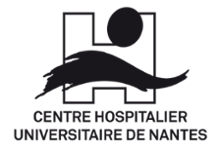Unravelling cardiac arrhythmia mechanisms with computational cardiac optogenetics
Stage Master 1, Master 2/Engineer - Team II : Ion channels and cardiopathies
Les pré-requis
- Formation en bioinformatique, en ingénierie biomédicale, en biophysique ou dans des domaines similaires.
- Etre familié de la programmation informatique (au moins dans un langage de programmation scientifique : C, C++, Fortran, Python, etc : C, C++, Fortran, Python, etc.)
- Capacité à communiquer en anglais
- Background in Bioinformatics, Biomedical engineering, Biophysics or similar fields.
- Essential familiarity with computer programming (at least in one scientific programming language: C, C++, Fortran, Python etc.).
- Ability to communicate in English
Résumé du projet de recherche
L'optogénétique est une technologie de pointe qui consiste à modifier génétiquement des cardiomyocytes ordinaires, insensibles à la lumière, de manière à ce qu'ils expriment des canaux ioniques contrôlés par la lumière sur leurs membranes cellulaires. Cette modification permet alors de contrôler l'activité électrique du cœur au niveau cellulaire à l'aide de la lumière du spectre visible. Bien qu'un contrôle efficace des arythmies cardiaques ait été prouvé expérimentalement sur des cœurs de petits animaux, il n'en va pas de même pour les cœurs de gros animaux, où les limitations techniques inhérentes deviennent importantes. Si toutefois ces limitations pouvaient être surmontées ou contournées, l'optogénétique (avec son excellente précision spatiale et temporelle et la perspective d'un contrôle indolore) serait l'outil idéal pour lutter contre les arythmies cardiaques mortelles telles que la tachycardie ventriculaire et la fibrillation ventriculaire. Ce projet se concentre sur une approche computationnelle de l'optogénétique afin de déchiffrer les mécanismes complexes responsables du succès ou de l'échec d'une technique de contrôle de l'arythmie.
********************************************************************
Optogenetics is a cutting-edge technology in which ordinary, light-insensitive cardiomyocytes are genetically modified so that they express light-controlled ion channels on their cell membranes. This modification then makes it possible to control the electrical activity of the heart at the cellular level with light from the visible spectrum. Although efficient control of cardiac arrhythmias has been experimentally proven in hearts of small animals, the same cannot be argued for large animal hearts, where inherent technical limitations become significant. If, however, these limitations could be overcome or bypassed, optogenetics (with its excellent spatial and temporal precision and the prospect of painless control) would be the ideal tool to combat lethal cardiac arrhythmias such as ventricular tachycardia and ventricular fibrillation. This project focuses on a computational approach to optogenetics to decipher the complex mechanisms responsible for the success or failure of an arrhythmia control technique.
Publications associées
- A Mathematical Model of Neonatal Rat Atrial Monolayers with Constitutively Active Acetylcholine-Mediated K+Current. R Majumder, W Jangsangthong, I Feola, DL Ypey, DA Pijnappels, AV Panfilov, PLoS Comp Biol 12(6): e1004946. (2016). https://doi.org/10.1371/journal.pcbi.1004946
- Optogenetics enables real-time spatiotemporal control over spiral wave dynamics in an excitable cardiac system. R Majumder, I Feola, AS Teplenin, AAF de Vries, AV Panfilov, DA Pijnappels, eLife, 7:e41076, (2018) https://doi.org/10.7554/eLife.41076
- Self-restoration of cardiac excitation rhythm by anti-arrhythmic ion channel gating. R Majumder, T De Coster, N Kudryashova, AO Verkerk, IV Kazbanov, B Ördög, N Harlaar, R Wilders, AAF de Vries, DL Ypey, AV Panfilov, DA Pijnappels. eLife 9:e55921 (2020) https://doi.org/10.7554/eLife.55921
- Pulsed low-energy stimulation initiates electric turbulence in cardiac tissue. R Majumder, S Hussaini, VS Zykov, S Luther, E Bodenschatz. PLoS Comp Biol 17(10): e1009476. (2021) https://doi.org/10.1371/journal.pcbi.1009476
- A mathematical model for electrical activity in pig atrial tissue. Peris-Yagüe V, Rubio T, Fakuade FE, Voigt N, Luther S, Majumder R. Frontiers in Physiology:250 (2022) https://doi.org/10.3389/fphys.2022.812535





